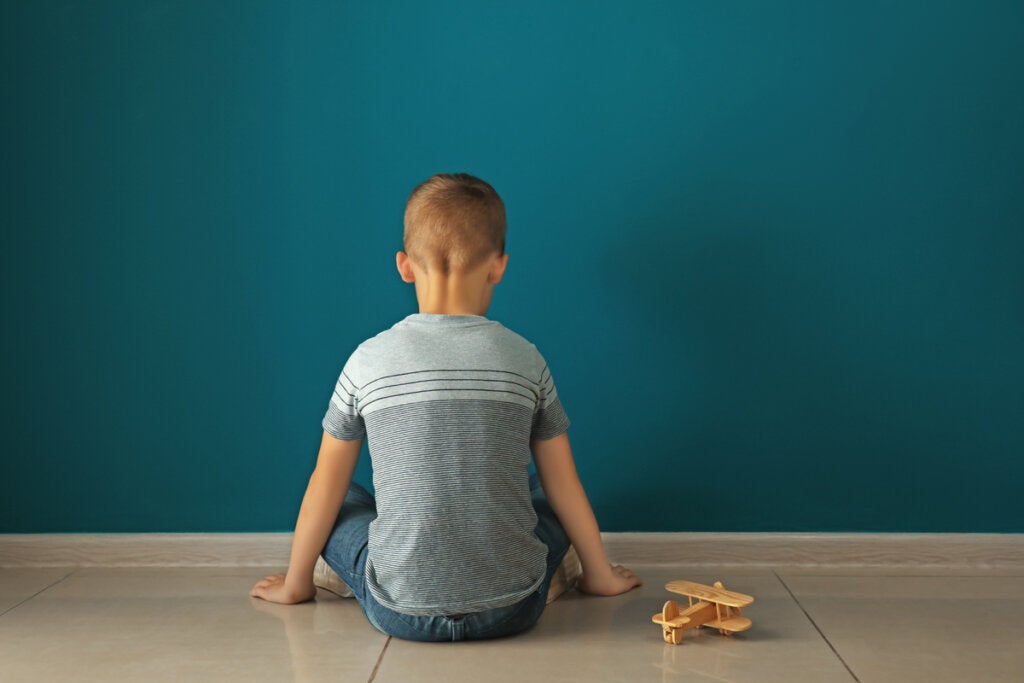We consider the ABA method as a therapy that focuses on developing social learning and communication skills. As a matter of fact, it’s usually applied in cases of children with autism spectrum disorder (ASD). However, it’s also a common therapeutic alternative in children with other circumstances.
Furthermore, in recent years, the ABA method has been applied to extremely diverse conditions. For example, addictions, dementia, eating and anxiety disorders, anger management, and post-traumatic stress, among others. Nevertheless, it’s a type of therapy that, in order to produce results, requires a strong commitment on the part of the affected person.
The ABA model was designed based on several investigations. These were conducted by Dr. Ivar Lovaas, from the Psychology Department of the University of Los Angeles, in 1987. He demonstrated that the behaviors of children with autism could be modified with the ABA method. Since then, its use has expanded.
“The greatest discovery of my generation is that human beings can alter their lives by altering their attitudes of mind.”
-William James-
The ABA method: a facilitator of autonomy
The name of the ABA method comes from the acronym, Applied Behavior Analysis. In fact, each of these elements corresponds to a principle of this particular therapy:
- Analysis. This corresponds to the principle of “experimental behavioral analysis”. It refers to the fact that progress is evaluated based on interventions that are recorded and measured.
- Conduct. This model is based on the principles of classical and operant conditioning. In other words, behaviorism.
- Applied. This refers to the fact that the principles apply to observed behaviors. It contrasts with models that refer to inferred behaviors.
The objective of the ABA method is to facilitate the development and autonomy of patients. It does so by designing a specific and personalized program of the skills that each individual requires to advance in their development.
ABA emphasizes those skills that are necessary to acquire new learning. These are attention, cooperation, and imitation. Furthermore, it promotes the development of basic social skills and communication skills that ensure proper interaction.
The characteristics of the ABA method
In addition to the principles of the ABA method, there are also seven characteristics that define its application. They’re as follows:
- Education based on success. The necessary tools are provided to achieve consecutive successes, avoiding unnecessary frustrations. This motivates and strengthens self-confidence.
- Structuring. The procedure is structured and is divided into achievable steps. They start from the simple, progressing to the complex until the person successfully develops the skill.
- Registration. The record is daily and systematic. In addition, it includes evaluations to measure and collect objective information on progress. Furthermore, if necessary, the program can be restructured to make it more functional.
- Individualization. Each program must be tailored to the specific characteristics of the person. For this reason, a thorough initial evaluation is necessary.
- Generalization. Therapeutic education begins at home. However, as it progresses, it must be applied to increasingly larger settings.
- Coordinated action with parents. The work is coordinated with parents. In fact, they must take an active part in the intervention to reinforce and complement it.
- Scientific supports. The actions and the therapy as a whole are supported by scientific production in this regard.

How does it work?
The application of the ABA method begins with a detailed evaluation of the child or adult patient. This initial review makes it possible for the therapist to design a personalized intervention program. It’ll be aimed at the specific development of the skills that each individual patient requires. Around nine hours a week should be dedicated to the plan.
Next, the therapists dealing with the case will identify or discover investigative evidence that supports their intervention. They’ll also improve their own therapeutic skills in this process. In the case of children, a training process is carried out with the parents in which their role within the therapy is explained to them.
As a rule, the more detailed a program is, the better it works. It must contain the actions, divided into steps, to be carried out. When this part is complete, the four basic actions of the ABA method apply:
- The discrete trial.
- Presentation and withdrawal of support.
- Searching for effective reinforcements.
- Systematic registration.
Available data indicates that the ABA method tends to achieve its objective. This is the development of cognitive, social, and communication skills. However, the data in this regard isn’t conclusive. In fact, in some cases, it offers magnificent results, while in others its implementation is hardly noticeable. Therefore, it’s clear that more and better research is required in order to perfect this method of therapy.
The post The ABA Method of Therapy and How it Works appeared first on Exploring your mind.

















Comments